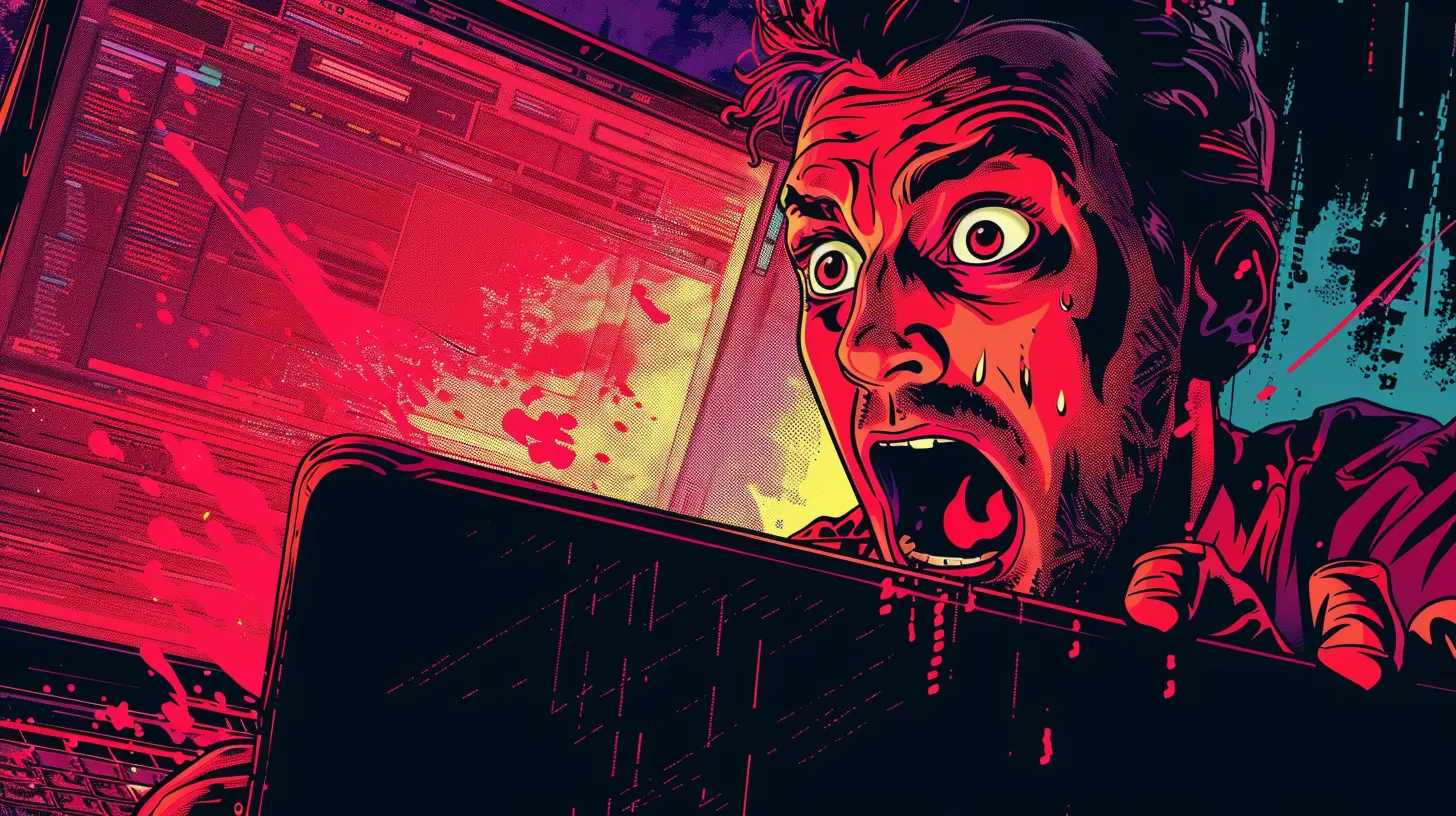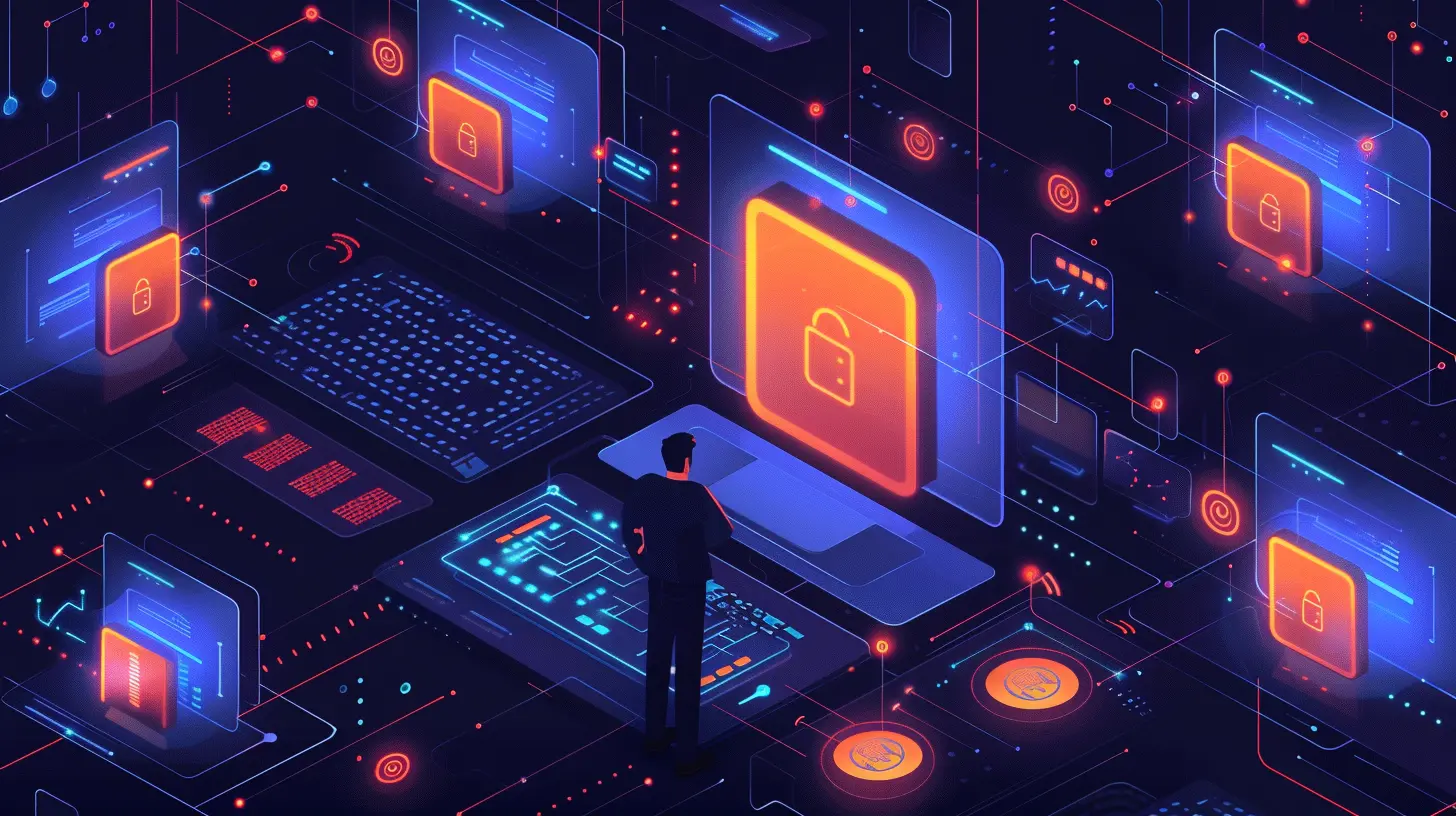Data Breaches: How They Happen and What You Can Do
3 August 2025
Let’s face it—data breaches are something most of us don't think about… until it’s too late. You wake up, grab your coffee, and see the dreaded email: _“We regret to inform you that your information may have been compromised...”_ Boom. Panic mode. Sound familiar?
With so much of our lives happening online—banking, shopping, social media, work—data breaches are becoming more common and more dangerous. But here’s the good news: once you get a grip on how these breaches happen and what you can do to protect yourself, you’ll sleep a little easier at night (and keep those hackers at bay).
This article won’t just throw technical jargon at you. Nah, we’re going to break it all down in plain English, like we're chatting over a drink (or coffee, if you're more responsible). So grab that cup and let’s talk about digital safety, minus the headache.
What Exactly Is a Data Breach?
A data breach happens when sensitive, confidential, or protected information is accessed or disclosed without authorization. Think of it like someone sneaking into your digital house and rifling through your personal drawers—even if they don’t take anything right away, they’ve seen stuff they shouldn’t have.Common Examples of Breached Data:
- Social Security numbers- Credit card or bank info
- Login credentials (yeah, your trusty Netflix password too)
- Medical records
- Private emails or messages
It doesn’t always have to be corporate-level leaks either. Your personal devices and accounts can easily be targets. That’s right—no one is too small or "non-famous" to be a victim.
How Do Data Breaches Happen?
Funny thing is, many breaches aren’t some elite hacker typing furiously in a dark room (though that’s Hollywood’s favorite angle). Often, breaches happen due to simple oversights or surprisingly basic attack strategies.Let’s break down the common ways info gets spilled:
1. Weak or Stolen Passwords
You wouldn’t use “password123” for your bank account… right? RIGHT?Weak passwords are like cheap locks. They’re easy to pick. And if you reuse the same password across multiple sites (guilty?), a single breach can open all your digital doors.
How they get you: Brute-force attacks or credential stuffing are to blame here. Basically, attackers throw a bunch of common passwords at accounts and hope for a hit.
🎯 Real Talk: If you’re using birthdays, pet names, or “qwerty,” it’s time to change that.
2. Phishing Attacks
Phishing is the digital version of a con artist. You get an email or text that looks super legit—maybe it's from “your bank,” PayPal, or even your boss. It urges you to click a link or provide sensitive info.One click and bam—malware gets installed, or your login details go straight into the hands of these cyber pickpockets.
📬 Quick Tip: Always hover over links before clicking. And if it feels fishy, it probably is.
3. Malware and Ransomware
Malware is like termites for your computer—it gets in quietly and wreaks havoc. Ransomware, a type of malware, encrypts your files and demands payment (usually in Bitcoin) to unlock them.How it spreads: Through downloads, sketchy websites, or even infected USB drives. Yep, that thumb drive you found in a parking lot? Don’t plug it in.
4. Insider Threats
Sometimes, the danger comes from within. Employees or contractors with access to sensitive systems might leak data—either maliciously or accidentally.It’s not always evil: Maybe someone clicked the wrong button or sent data to the wrong email. Mistakes happen. But the result? Still a breach.
5. Unpatched Software
Imagine leaving your front door wide open because you couldn’t be bothered to fix the lock. That’s what running outdated software is like.Developers constantly release patches to fix security holes. If you skip updates, you’re basically inviting hackers in for a digital joyride.
6. Physical Theft
Lost phone? Stolen laptop? These can lead to data breaches too—especially if the device isn’t encrypted or protected with a strong password.📱 Rule of Thumb: Treat your devices like cash. You wouldn’t leave your wallet unattended at a coffee shop, so don’t do that with your phone or laptop.
What Happens After a Data Breach?
Okay, so a breach happens. What now? Here’s what usually goes down:- Data gets sold on the dark web (yeah, that’s a real place).
- Scammers send targeted attacks using your leaked info.
- Your accounts might be hijacked, causing financial loss or reputational damage.
- You feel violated and helpless (been there, it sucks).
The effects can hit hard and linger for months—sometimes longer. Think of it like digital PTSD.
What You Can Do to Protect Yourself
Now that we know the how, let’s talk about the what. Here are no-nonsense, real-world steps you can take to put a fortress around your data.1. Use Strong, Unique Passwords
Yes, it’s annoying to have a million different passwords. Use a password manager like LastPass, 1Password, or Bitwarden to help you out. These tools create and remember complex passwords for you.💥 Pro Tip: Ditch passwords like “iloveyou” or “letmein” for something like “%4RtUz#7v!” (no, don’t actually use that—get your own).
2. Enable Two-Factor Authentication (2FA)
This adds a second layer of verification. Even if hackers get your password, they’d still need your phone or another device to get in.Google Authenticator, Authy, and even SMS codes are great options. It’s like a bouncer checking your ID AND asking you a secret question.
3. Keep Your Software Updated
Whether it’s your phone, laptop, or even your router—make sure it’s always running the latest software. Yes, the pop-ups are naggy, but skipping them is like telling burglars your house address and leaving the door open.4. Be Skeptical of Emails and Links
Don’t click just anything. Legit companies won't ask for sensitive info via email. If in doubt, go directly to the website instead of clicking links in the email.If an email says your account is “on hold” or “suspended,” don’t panic. Verify it first.
5. Monitor Your Accounts
Check your bank and credit card statements often. Use a credit monitoring service if you can. Tools like Credit Karma or Experian can alert you if something fishy is going on.🧐 Stay alert—it’s your first line of defense.
6. Use a VPN on Public Wi-Fi
Ever done online banking at a coffee shop? Yeah, risky move.Public Wi-Fi is often unencrypted. Hackers can intercept your data like it’s nothing. Use a Virtual Private Network (VPN) to create a secure tunnel for your information.
7. Freeze Your Credit
If you’re not applying for credit anytime soon, freezing your credit report makes it much harder for someone to open new accounts in your name.It’s free, and you can “thaw” it any time you need to.
🔐 Sounds extreme? Maybe. But it’s like locking up your valuables in a safe instead of leaving them on your porch.
8. Encrypt Your Devices
If your laptop or phone gets stolen, encryption makes data nearly impossible to access without the password. This is especially critical for work or sensitive files.Businesses Need to Step Up Too
If you're a business owner—or work at a company dealing with user data—it’s not just about “oops” and apologies. Companies are responsible for protecting user data with:- Security audits
- Employee training
- Intrusion detection systems
- Disaster recovery plans
Trust is hard to earn and super easy to lose. One breach can tank your reputation and cost millions.
The Bottom Line
Data breaches aren’t just some sci-fi plot or news story anymore. They’re real, they’re rampant, and they can hurt—bad.But you’re not powerless. You’ve got tools, tricks, and tech that can keep your digital doors locked tight.
Is it extra work? A little.
Is it worth it? Absolutely.
In a world where data is currency, staying secure isn’t optional—it’s essential.
Stay smart. Stay safe. And for heaven’s sake, change that “abc123” password.
all images in this post were generated using AI tools
Category:
Data PrivacyAuthor:

Marcus Gray
Discussion
rate this article
1 comments
Kevin McIlwain
This article effectively highlights the multifaceted nature of data breaches, emphasizing both human and technological vulnerabilities. It offers actionable insights for individuals and organizations, underscoring the importance of proactive measures—such as strong passwords and regular software updates—to mitigate risks and protect sensitive information.
August 24, 2025 at 3:26 AM

Marcus Gray
Thank you for your feedback! I'm glad you found the article valuable in addressing both the human and technological aspects of data breaches. Prioritizing proactive measures is indeed crucial for safeguarding sensitive information.


